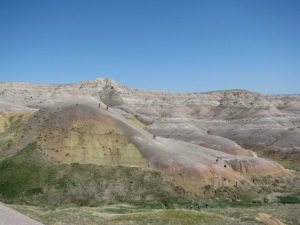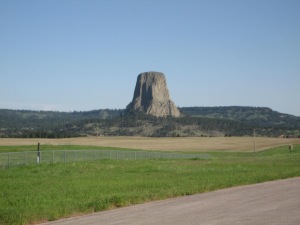from Kellen Gunderson:
Western South Dakota contains two gems that are often forgotten in discussions of great landscapes of the American Rocky Mountains. Just off I-80 near the Wyoming border lies the famous South Dakota Black Hills Mountains and Badlands National Park. Before the Black Hills became the holy mountains of the Lakota Sioux Tribe, it was formed during one of the last major pulses of uplift during the Laramide Orogeny; the mountain building event responsible for the creation of many of the iconic ranges we know in the Rockies today.
Just east of the Black Hills lies Badlands national park. Most of the rocks in the Badlands were deposited during the time the Black Hills were being uplifted as sediments shed off the uplifted mountains were deposited in an adjacent basin. Erosion and escarpement retreat has exposed these rocks in deep canyons and steep cliffs that are flanked by South Dakota shortgrass prairies.
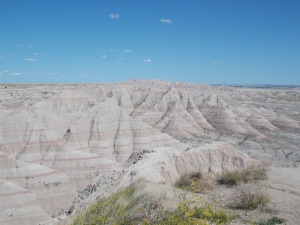 |
|
The Brule formation dominates the Badlands landscape and contains numerous vertebrate fossils.
|
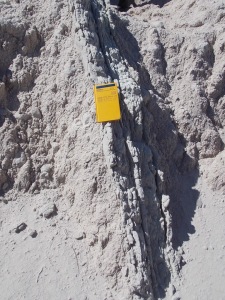 |
|
Clastic dike in Brule Formation in Badlands National Park
|
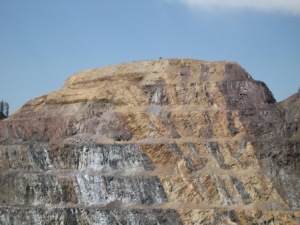 |
|
A goldmine in the Black Hills exposes spectacular dikes and sills.
|
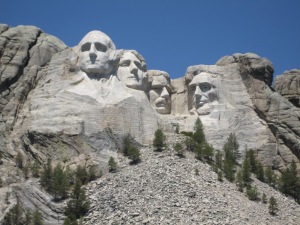 |
|
No visit to the Black Hills is complete without seeing the famous Mt. Rushmore.
|
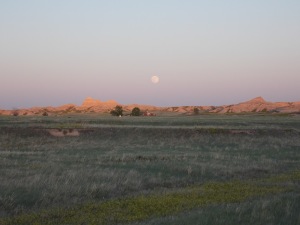 |
|
Sunset and moonrise over the prairies and badlands in South Dakota.
|
![]() This work is licensed under a Creative Commons Attribution-NonCommercial-ShareAlike 4.0 International License.
This work is licensed under a Creative Commons Attribution-NonCommercial-ShareAlike 4.0 International License.

